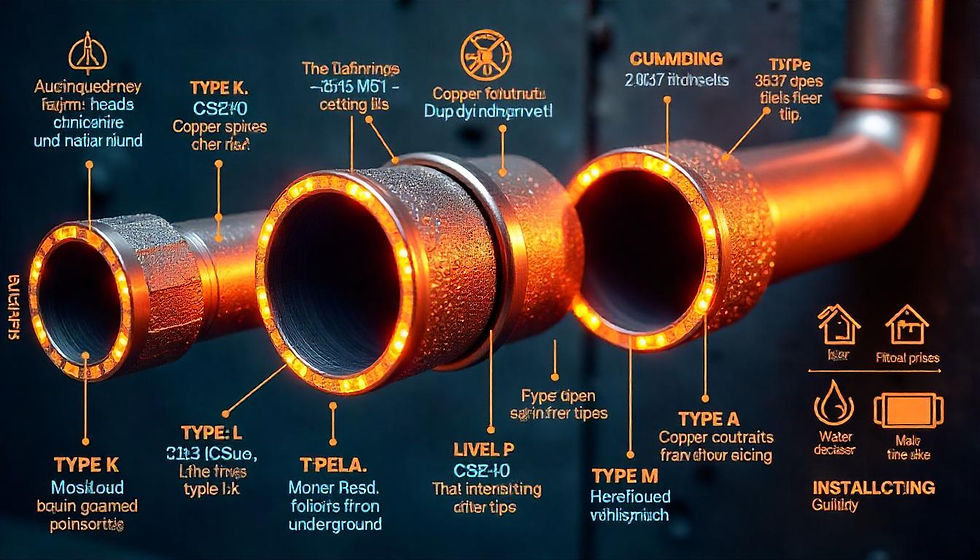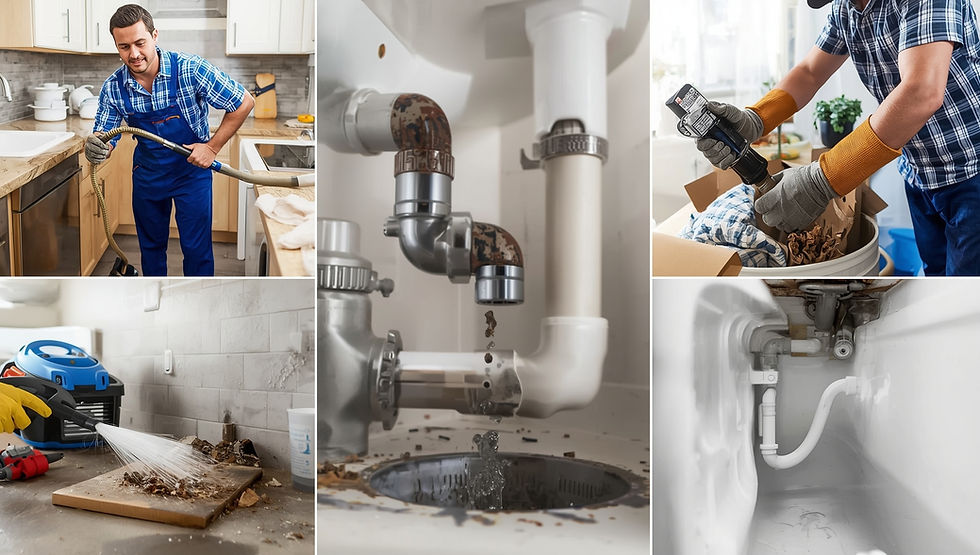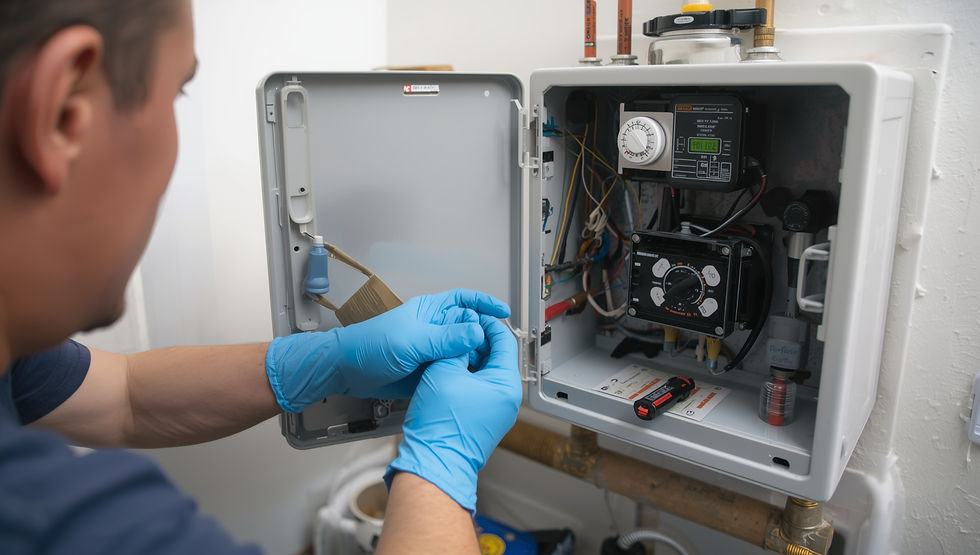What Type of Copper Pipe for Residential Plumbing?
- bradleyserranomark
- Jun 4
- 4 min read
When you think about plumbing in your home, copper pipes often come to mind. Copper pipes are a popular choice for residential plumbing because they last a long time and are safe for drinking water. But did you know there are different types of copper pipes? Choosing the right type of copper pipe for your home can make a big difference in how well your plumbing works. In this guide, we will help you understand which copper pipe is best for residential plumbing and how a residential plumber decides what to use.
Types of Copper Pipes Used in Residential Plumbing
There are three main types of copper pipes used in homes: Type K, Type L, and Type M. Each type has a different thickness and is used for different parts of the plumbing system.
Type K Copper Pipe
Type K copper pipe is the thickest and strongest. It is often called a heavy-duty copper pipe because it can handle a lot of pressure. Residential plumbers use Type K pipes for underground plumbing or where the pipe might face damage from outside forces. For example, Type K is great for water service lines that come from the street to your house.
Type L Copper Pipe
Type L copper pipe is medium thickness, making it one of the most popular choices for water supply lines inside homes. It’s not as thick as Type K, but still strong enough for most plumbing needs. Residential plumbers like to use Type L pipes for indoor plumbing because they balance durability with cost. If you need a good all-around pipe for your home’s water system, Type L is a smart choice.
Type M Copper Pipe
Type M copper pipe is the thinnest of the three. It’s sometimes called a thin wall copper pipe. This pipe is used in places where water pressure is low or for heating systems. However, it is not usually the best choice for residential plumbing because building codes often require thicker pipes. Before using Type M, check your local residential plumbing code to be sure it’s allowed.
How to Choose the Right Copper Pipe for Your Home
Choosing the right copper pipe depends on a few important factors. First, consider your water pressure. If your water pressure is high, you will want a thicker pipe like Type K or Type L. Second, think about where the pipes will go. Pipes underground or in walls need to be strong and durable. Finally, your budget matters. Type K pipes cost more because they are heavy-duty, while Type M is cheaper but less durable.
A residential plumber helps you pick the right pipe by looking at all these factors. They make sure the copper pipe thickness matches your home’s plumbing needs. Choosing copper pipe with the right thickness helps your plumbing last longer and work better.
Advantages of Using Copper Pipes in Residential Plumbing
Copper pipes have many benefits for your home’s plumbing. One big advantage is durability. Copper resists corrosion, so it won’t rust or break down easily over time. This means copper pipe lifespan can be 50 years or more in a typical home.
Copper is also safe. It does not release harmful chemicals into your drinking water. This makes it a top choice for families who want clean, healthy water. Plus, copper pipes can handle heat well, so they work for both hot and cold water.
Residential plumbers trust copper because it is reliable and long-lasting. Using copper pipes gives homeowners peace of mind that their plumbing system is strong and safe.
Installation Tips for Copper Pipes in Residential Plumbing
Installing copper pipes requires skill. Residential plumbers use special tools to cut, fit, and solder copper pipes together. Soldering copper pipes creates tight joints that won’t leak. If you are a DIY enthusiast, remember that copper pipe installation needs care to avoid damage.
Here are some quick installation tips:
Use a pipe cutter to make clean cuts.
Clean pipe ends before soldering.
Heat the pipe and fitting evenly to melt the solder properly.
Following these steps helps make your copper plumbing system strong and leak-free.
Common Problems and Maintenance for Copper Plumbing
Even the best plumbing can have issues. Copper pipe leaks sometimes happen because of corrosion or physical damage. Signs of wear include greenish stains or damp spots near pipes. Regular maintenance can prevent bigger problems.
Residential plumbers recommend checking pipes yearly and fixing small leaks quickly. Keeping your plumbing system well maintained means it will last longer and work better.
Alternatives to Copper Pipes
While copper pipes are popular, some homeowners choose other plumbing materials. PEX and PVC are two common alternatives. PEX pipes are flexible and easier to install, which can save money. PVC pipes are mostly used for drain and vent systems, not water supply.
When comparing PEX vs copper, copper wins for durability and heat resistance. However, PEX is cheaper and easier to work with for some jobs. Your residential plumber can help you decide which pipe type fits your home and budget.
Conclusion
Choosing the best copper pipe for your home is important for a strong and safe plumbing system. Type K, Type L, and Type M copper pipes each have different uses. A residential plumber will help you pick the right copper pipe thickness based on your water pressure, pipe location, and budget.
Copper pipes offer many benefits, including long lifespan, corrosion resistance, and safety. Proper installation and maintenance keep your copper plumbing working well for years. While alternatives like PEX and PVC exist, copper remains a trusted choice for residential plumbing.
If you want a reliable and durable plumbing system, talk to a residential plumber about using the right type of copper pipe for your home.





Comments